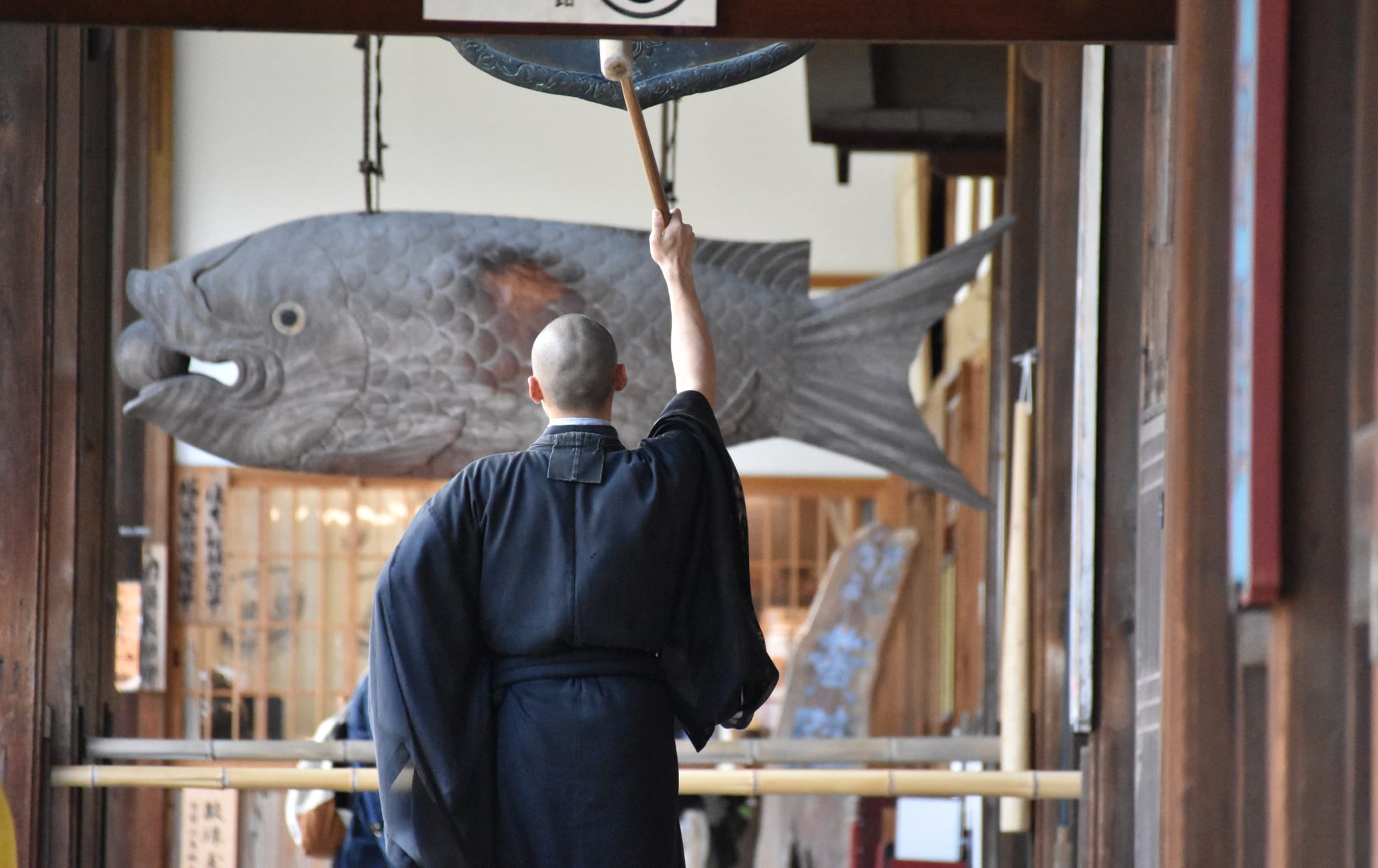A temple steeped in Chinese influence
Manpukuji Temple is a secluded place in Kyoto's Uji region at the base of Mt Obaku. Surrounded by beautiful pines, it was founded in 1661 by a Chinese monk named Yinyuan Longqi, known in Japanese as Ingen Ryuki. Built in the Ming Dynasty style, many of the structures here are built of teak, making the temple unusual in both respects.
Quick Facts
Ingen and his successors brought new takes on art, calligraphy, diet and medicine from the Asian continent
The temple has two vegetarian restaurants
How to Get There
From Kyoto Station , take the Nara Line to Obaku Station. The temple is a seven-minute walk from there.

A dragon-shaped complex
In 1661, Zen master Yinyuan Longqi founded the temple with his disciple Muyan. Manpukuji was constructed in the architectural style of the Ming Dynasty era in China. The way the temple buildings are arranged reflects this style as well, with the layout reminiscent of a dragon.


Muyan took control of the temple in 1664. It wasn't until the fourteenth priest took over that Manpukuji was run by Japanese monks.
Chinese traditions abide
The temple is still particularly Chinese in style, and enshrines sculptures made solely by Chinese artists. Traditional Chinese rituals are maintained, and the priests continue to recite musical sutras in the Bonbai, or Indian, style. Such elements make the atmosphere unique and markedly different from the Japanese-style temples found throughout Kyoto.

A wooden fish gong
One interesting and singular feature of the temple is its gyoban, a large flat wooden ornament shaped like a fish and struck like a gong to mark meal times and sutra recitations.
Vegetarian lunch
Manpukuji offers fucha ryori, or Chinese-style vegetarian meals. You'll need to reserve at least three days in advance to try this meal, which is for a minimum of two people.

























































